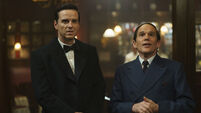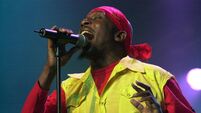Aladdin Sane, 50 years on: A deep dive inside Bowie's great album
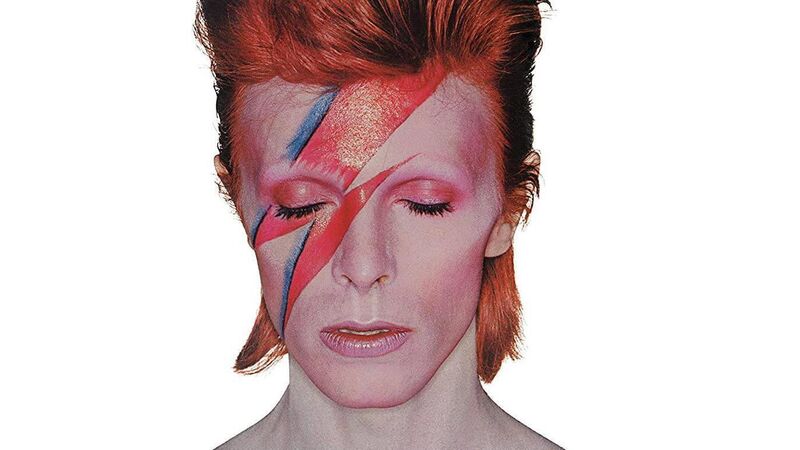
A detail from the Aladdin Sane album cover by David Bowie. (Album picture by Brian Duffy)
With his flame-red hair, Kabuki-influenced stage clothes and make-up enhanced by shaved eyebrows David Bowie emerged as a new kind of pop star in the summer of 1972.
By the autumn, Aladdin Sane, a schizophrenic tendril of his Ziggy Stardust character, was being developed while touring America. Featuring such tracks as ‘The Jean Genie’ and ‘Drive-In Saturday’, the album of the same name delivered a much harder sound when it was released on April 20, 1973.
Drummer Woody Woodmansey, who played on that album and its predecessor, believes the constant live gigs fed into the new sound. “By the time we hit America and were playing in 10,000-seaters, our rock roots came out; you feel like you have to lay it on a bit more,” says the 73-year-old, the last surviving member of the Spiders From Mars. “The guitars became raunchier, everything got louder and went up a level which affected the recording of Aladdin Sane. It was good to have that influence from playing live.”
Before release, ‘The Jean Genie’ and ‘Drive In Saturday’ would be hit singles in the UK and Ireland. While both gave a hint of what was coming next Bowie was also offering his fans an alternative. Victoria Broakes, co-curator of the David Bowie Is exhibition at the Victoria & Albert museum in London, explained: “He’s a porthole for his fans, that’s an important aspect of how he permeated our culture using philosophers, authors and film directors from Kubrick to Kabuki but he wears it lightly, he offers these ideas but we can take or leave them.”
Aladdin Sane remains arguably Bowie’s most full-throttle rock’n’roll record, where Ziggy’s English eccentricities merge with America’s dark underbelly. It was left to Spiders from Mars guitarist Mick Ronson to channel the raw, underground energy Bowie had absorbed on tracks such as ‘The Jean Genie’.
Pianist Mike Garson says the presence of Ronson and the Spiders were hugely significant to the album’s sound. “Ronson is an unsung hero and genius. I’m sitting on his shoulders and the Spiders. At that stage, they are tight like crazy in the way that the Beatles or U2 and the great groups are at that level. I’m the whipped cream or the cherry with some nuts.
“The whole infrastructure was there. We were using the ‘Hey Jude’ piano The Beatles used at Trident, and you also have Ken Scott’s [producer] experience and the way he mixed that record.”
Of course, at the heart of it all was Bowie’s vision. For the title track, he told the assembled musicians, “Play as wild and avant-garde as you want.”
Ronson’s instinctive riffs hit the listener, while he retains a characteristically clean and melodic delivery. As a guitarist, Ronson is at his most effective with ‘Panic In Detroit’ and ‘Cracked Actor’.
“Even when Ronno tried to play nasty, there was still a purity to his playing,” explains producer Ken Scott. “Mick was one of the nicest guys and that came through in the playing because it was him. With ‘Cracked Actor’, we were after the nastiest sound we could get from the guitar and harmonica. David started to play it straight acoustically and it sounded so weak compared to everything else, so we fed it through Mick’s Marshall and cranked it. We wanted it as nasty as we could get it.”
Aladdin Sane perhaps more than any other Bowie album achieved that aim. One of Garson’s abiding memories is perpetually-exploding speakers. “Our recordings were being blasted out and every night. The speakers would blow out and they would have to replace it. God knows what it was costing.”
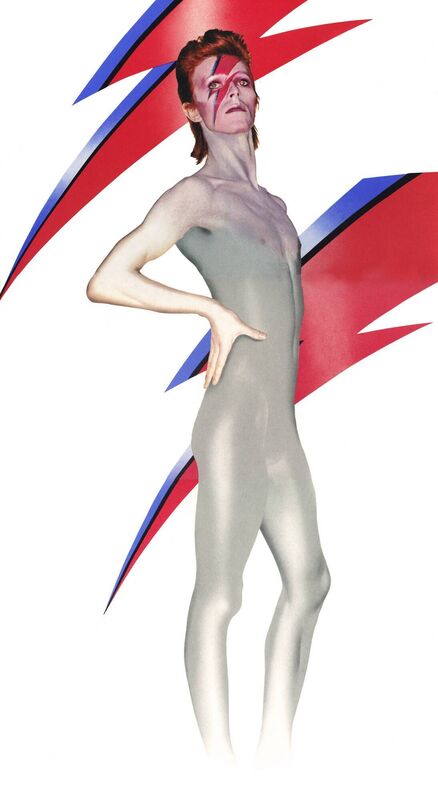
When Bowie was 15, his lifelong friend George Underwood had punched him in a row over a girl, leaving him with an injury that gave him two different-sized eye pupils. It would later be a boon to Ziggy’s alien appearance. Underwood suggests that Bowie later said he had done him a favour with the punch.
‘Time’ had at first been written with Underwood in mind. “The song was originally titled ‘We Should Be On By Now’ and recorded with me on vocals,” says Underwood. “Along with ‘Hole In The Ground’ and ‘Song for Bob Dylan’, these three songs David wrote for me. He wanted to revive my singing career at the time. Later on, David decided to re-write 'We Should Be On By Now' and turned it into 'Time', a very different song with a few bits from the original.”
It was a habit Bowie continued throughout his life, taking threads from previous ideas and giving them a new context. Mike Garson explains: “That’s a 1920s stride style of piano; again David pulled that out of me. He was the ultimate casting director because he got the best out of everybody.”
Another significant player he brought on board was David Sanborn who added tenor sax to a new version of ‘The Prettiest Star’, released as a single three years earlier with Marc Bolan on guitar. Bowie was already looking ahead. “David would sit listening to Aretha Franklin,” says Garson of their time travelling across America in 1972. “He was thinking of Young Americans; he jumped a couple of albums.”
Aladdin Sane’s closing track, ‘Lady Grinning Soul’, remains a much-lauded cut that was never performed live by its creator. Underwood remembers Bowie bringing French model and singer Amanda Lear, who would appear as the cover star on Roxy Music’s For Your Pleasure, to his home in Hampstead. “He had just been to see Metropolis and we were big fans of the film visually,” recalls Underwood.
It’s been suggested Lear, amongst others, was the inspiration for ‘Lady Grinning Soul’. “It almost has a French influence. David was also reading a lot of French philosophy at the time,” adds Underwood. “It also sounds to me like it could be Berlin at a burlesque club after the war.”
It's a spine-tingling moment when Garson begins to play some of the tune’s higher notes over Zoom to illustrate the influence of French composer Claude Debussy. “There’s a lot of classical influences,” he explains. “Chopin, Franz Liszt, there’s some Rachmaninov mixed with my voice adding some jazz chords.”
From rock’n’roll to classical and jazz, it all made for an album that still sounds great 50 years later.
- Aladdin Sane 50th anniversary half speed master vinyl and picture disc are released on April 14
- Aladdin Sane 50 Years is being marked by a series of events The Southbank Centre, London for more info southbankcentre.co.uk
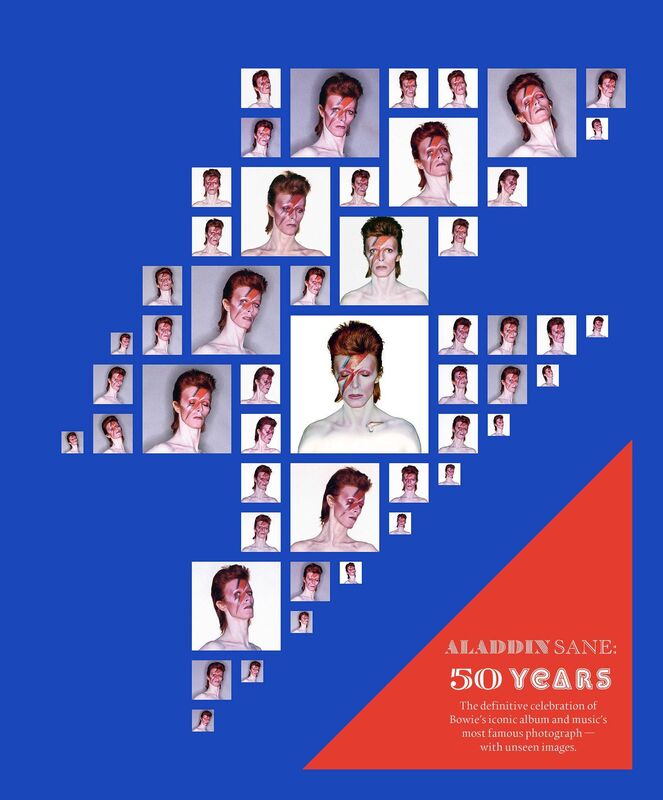
The famous picture of David Bowie on the cover of Aladdin Sane was taken by Brian Duffy (commonly known as ‘Duffy’).
His son Chris explains: “Duffy’s father was from Athlone and his mother from Mayo. They moved to London, and while he was conceived in Ireland, he was born in London.”
Chris was around for the Bowie shoot and even got to witness some of the work being done on the album. “I was fortunate enough to go down there and listen to David recording the new album which was going to be called ‘A Lad Insane’. It was Duffy who reworded it ‘Aladdin Sane’ on the day of the shoot.”
For the shoot, Bowie had a striking flash painted on his face. Chris reveals how his nan had a part in influencing an image that also echoed a design used by Elvis and his ‘TCB’ (taking care of business) motto.
“David always had the flash concept in his head,” says Chris. “Being a big Elvis fan who he shared his birthday with, he lifted it from his taking care of business in a flash acronym. When they were deciding on the colour scheme they agreed on the flash from the Panasonic rice cooker my grandma bought. So you could say she was elemental in bringing that to fruition.”
Chris refers to the cover as "the Mona Lisa of Pop", and it remains Bowie’s most recognisable album sleeve. It also provided him with a brand logo in the form of the flash but it’s the small teardrop on Bowie's shoulder that adds a further uncanny quality.
“I think that was Duffy putting his Daliesque abstract stamp on it, the image would still look striking without it but the watermark makes it even more mysterious. It could be a teardrop, it could be a mercury water droplet, and its shape is also quite phallic. David didn’t know about that until afterwards, Duffy just put it on there.”
- The book, Aladdin Sane 50 Years, by Chris Duffy is out now


